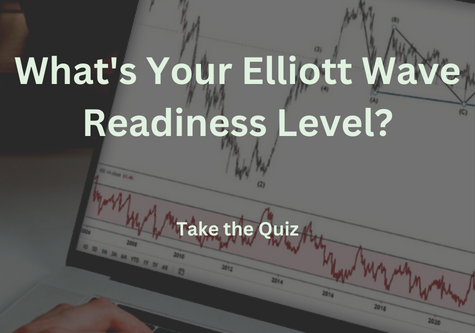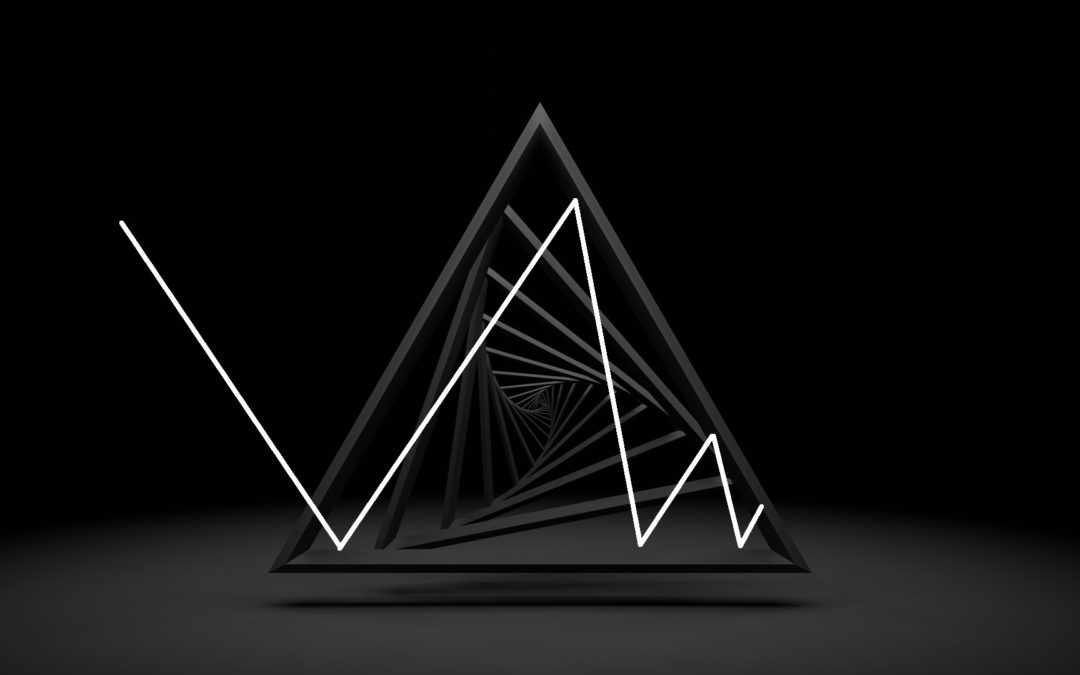Triangle patterns are a versatile formation for budding Elliott Wave technicians. When a triangle pattern is spotted, it can help the trader focus on:
- Identifying the larger wave in development
- Preparing for a reversal
You see, triangle patterns carve in only certain places within the 8-wave Elliott wave cycle. Therefore, when we spot the triangle pattern, we can focus more heavily on where prices are sitting within the larger cycle.
Where an Elliott wave triangle sits within a price cycle
Triangles are most commonly found within the fourth waves of a five-wave impulse, the “B” wave of an A-B-C zigzag pattern, or the “X” wave of a W-X-Y correction.

There are other places where triangles can be found, but the above three spots are the most frequent habitats.
Using triangles to determine the larger wave
Once you understand where triangles are frequently found, then we can reverse engineer what the larger pattern that may be developing.
Prior to the triangle forming in the image above, notice what happens BEFORE the triangle. In some instances (like the Impulse and W-X-Y), there are three waves leading into the triangle.
In the case of the zigzag, there would be one or five waves.
When you spot a triangle, look left and determine how many waves are leading into the triangle. That clue can help you narrow down the potential options for the larger pattern under development.
Triangles precede a reversal
Do you notice what the triangles have in common within each of the three locations above? The triangle is the second to last wave of that sequence.
In other words, when you successfully spot a triangle, it provides advance warning of a reversal on the trend.
Take for example the Russell 2000 Index.

From March 2021 to October 2021, a large triangle formed. This triangle was in the fourth wave position of a larger impulse wave. Therefore, once this triangle completes, we can anticipate a wave 5 rally.
Within an impulse pattern, a fifth wave is the final wave of the entire sequence. The fifth wave is a terminal wave of the entire rally and we can then anticipate a bearish reversal.
After the fifth wave rally, we can expect a large correction to consolidate the previous impulse wave OR possibly an full retracement of the previous rally from March 2020.
5 basic Elliott wave patterns
The triangle pattern is one of the five basic Elliott wave patterns that also include :
- impulse
- diagonal
- zigzag
- flat
- triangle
Once you are armed with simple pieces of information similar to what we shared above, then you can then establish a trend bias and identify potential reversal zones.
Newer traders love Elliott wave because of the framework Elliott wave provides to analyze the market’s trends.
Unfortunately, many traders don’t stick with Elliott wave because mastering it involves studying and understanding the patterns closely.
I’ve discovered there are 4 levels of Elliott Wave mastery. What you learn at each of these levels is unique to each level. What is YOUR Elliott Wave Readiness Level?


